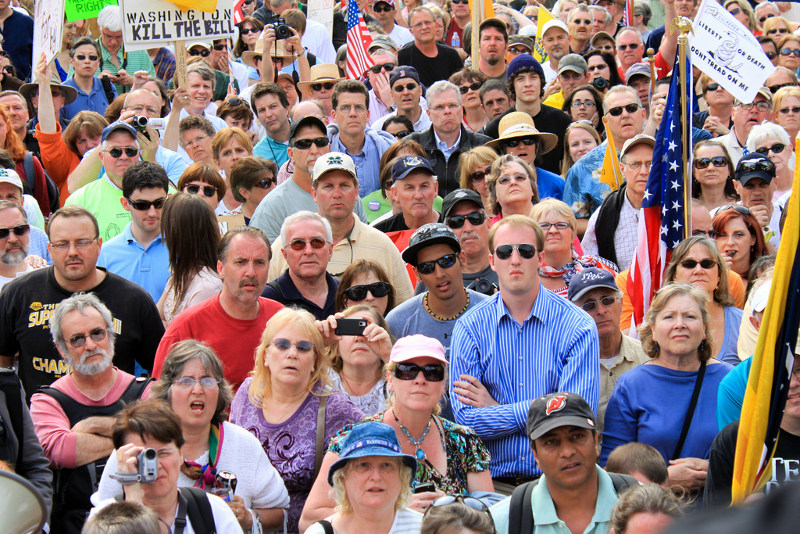A recent New York Times/CBS Poll presents interesting findings for those interested in the demographics and opinions represented by the so-called “Tea Partiers.” The poll finds support for the Tea Party at just 18%, much lower than the 27% reported in earlier polls. They also added a second and far more relevant category, “Tea Party activist,” for those who have actively done something to “build the movement.” They found that just 4% have actually attended rallies, donated money, etc., which is hardly the “grass roots rising tide” that has been presented in the media.
Much has been made of the supposed “populist” rage represented by this group, with many on the left even presenting them as angry members of the working class. While there may be some workers involved, due to the lack of a mass political alternative, the poll painted a very different picture of the core of the movement.
They are almost universally white and male, a conclusion that should come as no surprise to anyone that has seen pictures or video of their rallies. Even more interesting is that they are disproportionately of upper-middle class status. Far from the “country bumpkin” stereotype being pushed in the media, almost no one in the Tea Party self-defined as “lower class,” compared to 13% of the general public who see themselves in that category. 18% of the Tea Party self-describe as upper-middle or upper-class, compared to 12% of the general public. Self-described “working class” protesters were extremely underrepresented.
In addition, the Tea Party is disproportionately older, with over 77% of supporters being 45 or older. They tend to have an opinion of the GW Bush presidency that runs exactly opposite to that of the public at large, and they are nearly twice as likely as the average American to say that “too much has been made of the problems facing black people.”
They also tend to be Republican, and strongly so, which makes their “third party” viability, much touted in the media, a pretty unrealistic scenario at this stage. Interestingly, however, most of them support Medicare and Social Security, both huge government programs, with a surprising percentage of these “anti-government” activists benefiting from these programs. 4% of Tea Party respondents even said that what was needed was bigger government and more social services, which confirms the generally confused nature of this “protest” movement.
Source: Socialist Appeal - United States

